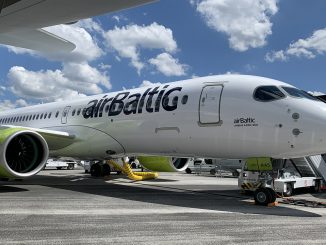
Concorde, the World’s only truly successful supersonic airliner, flew for the last time on 24th October 2003, with British Airways.
The final flight
When flight ‘Speedbird 2, Concorde’ touched down at London Heathrow at 1605 on 24th October 2003, it marked the end of supersonic travel for the masses. It was operated by G-BOAG, the 14th Concorde to be built, which can now be seen at the Museum of Flight in Seattle. The flight from New York’s JFK was filled with mostly high profile guests, who famously flew on Concorde frequently over its 27 year service life. The only other operator, Air France, last flew its passenger service on 27th June 2003.
British Airways pulled out all the stops to ensure that Concorde had a fitting send off. Alpha Golf was joined by Alpha Echo and Alpha Foxtrot for a never before seen triple landing. G-BOAE flew from Edinburgh and G-BOAF flew from Heathrow around the Bay of Biscay before returning, and landing one after the other.
The miracle machine
During its development, the airliner was as much of a political statement as it was an engineering marvel. Built as a joint venture between Aérospatiale in France and BAC in the UK, it was heavily funded by both country’s governments. The race to build a supersonic jetliner was fought amongst three projects.
The Russians were first to the table with their Tupolev Tu-144. During the days of Cold War espionage, the Tu-144 bore a suspicious resemblance to Concorde. It was also slightly larger, faster and first flew 21 days before Concorde. However, after just a year in service with Soviet Russia’s national carrier Aeroflot, it was retired from service in 1978.
Not wanting to be outdone by the Europeans, especially not the Russians, the US also tried building a supersonic aircraft. Dubbed the Boeing 2707 SST, Boeing’s Supersonic Transport would have been the largest and fastest of all. Excessive costs saw Boeing shelf the idea, instead turning to build the giant 747, thinking that larger, efficient aircraft would become more popular than fast ones. The 2707 never made it any further off the drawing board than into a life size wooden mock-up, albeit complete with interior.
Concorde also constantly struggled financially during its development. So much so that it was on the brink of cancellation many times. The fact that it eventually saw 27 years of service could be considered as some kind of miracle.
Back to the Future
It’s hard not to think that we’ve actually gone backwards when it comes to flight duration. Concorde would land in New York at a local time before the one it had departed in London or Paris. Travelling at 60,000 ft above the Earth, faster than a rifle bullet, you could sip champagne while observing the curvature of the earth out of the window. The air is so thin at that altitude that there wasn’t the slightest hint of turbulence or vibration. Crossing the Atlantic in just under four hours was normal, and now it takes eight.
Of the 20 built, 19 are now museum exhibits all over the world. One was lost when an Air France Concorde crashed after take-off from Paris in 2000.
Matt is a Berlin-based writer and reporter for International Flight Network. Originally from London, he has been involved in aviation from a very young age and has a particular focus on aircraft safety, accidents and technical details.



